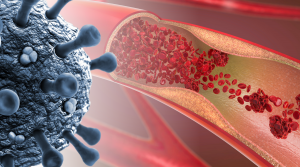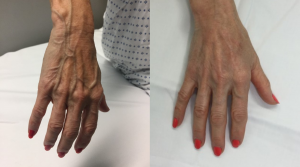What is Deep Vein Thrombosis (DVT)?
Deep Vein Thrombosis (DVT) is the formation of a blood clot (thrombosis) in a vein deep inside the limb. They can occur in both the upper and lower limbs.
What are the symptoms and signs of a DVT?
The commonest symptoms of a DVT are pain and swelling of the affected limb. In the leg, the calf area is usually the most painful. In more serious cases there may also be some dusky discoloration of the skin, and the limb looks and feels congested.
DVTs can damage and scar the veins of the leg and cause long term problems. This is called post thrombotic syndrome. The leg becomes chronically uncomfortable and swollen, the skin discolours, and leg ulcers may develop.
Another serious complication of DVT is pulmonary embolism. This happens when the blood clot in the leg vein dislodges and travels to the lungs where it gets stuck. This is a serious condition which can be fatal.
Who is at risk of DVT?
Anyone can get a deep vein thrombosis. The risk of DVT goes up in certain situations including:
- Having had a DVT or pulmonary embolism in the past, or someone in your family suffering from blood clots of any sort
- Having had a recent operation
- Injury/surgery to the lower limb requiring immobilisation in a plaster cast or walking boot
- Limited mobility as a result of illness or injury
- Long journeys especially long-haul flights
- Dehydration
- Pregnancy
- The contraceptive pill or hormone replacement therapy (HRT)
- Malignant disease (cancer)
- Obesity (being overweight)
- Severe heart disease
- Some blood diseases
- Varicose veins
The risks of DVT are higher for people with more than one of these risk factors.
How is a deep vein thrombosis diagnosed?
The most reliable way to diagnose a deep vein thrombosis is to perform a detailed doppler-ultrasound scan (a duplex scan) of the limb. Sometimes the scan is combined with a blood test to make the diagnosis even more accurate.
How is a deep vein thrombosis treated?
Most DVTs can be treated with anticoagulants (blood thinners). When necessary the blood clot can be removed by keyhole methods to dissolve it or suck it out of the vein.
If you have concerns about DVT or vascular health in general, please contact us for more information.










